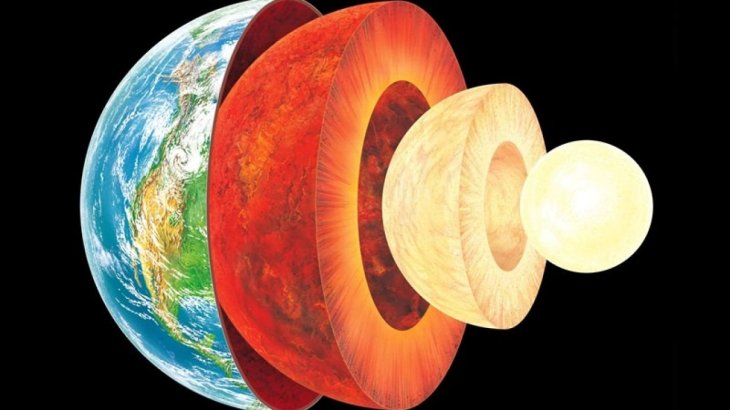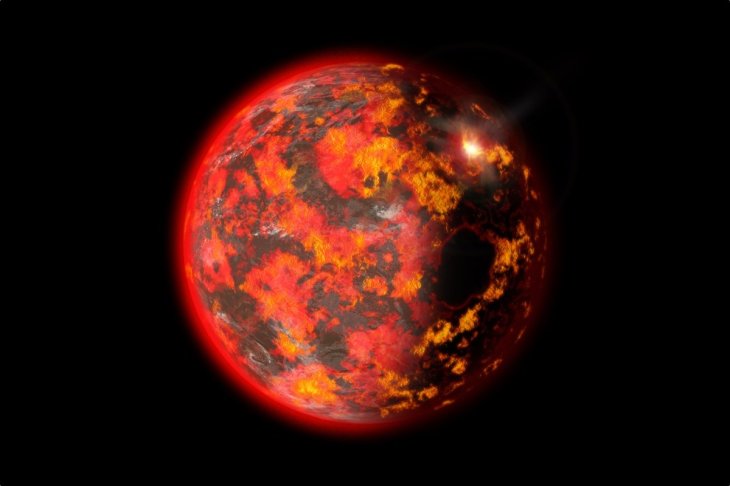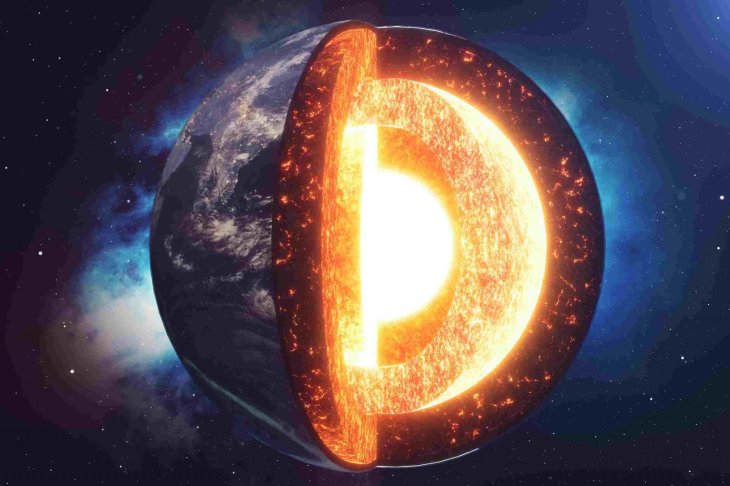When Will Earth Lose All Of Its Energy And Cool Off?
Dhir Acharya - Jan 05, 2021

The temperature at the Earth’s crust is stable throughout the year. But the matter beneath the crust of our home planet, the core, is extremely hot.
- Japan Hydrogen Breakthrough: Scientists Crack the Clean Energy Code with Mind-Blowing 1,000% Efficiency Jump
- 'Five-second rule' For Food Dropped On The Floor: Is It True?
- Scientists Want To Send 6.7 Million Samples, Including Sperm, To The Moon
The temperature at the Earth’s crust is stable throughout the year. But the matter beneath the crust of our home planet, the core, is extremely hot.
The core of the Earth is incredibly important as it drives plate tectonics and protects us from solar radiation, among other things. However, have you ever wondered how long it can stay hot? Here’s your answer.
The temperature at the Earth’s core is believed to be higher than the Sun’s surface, more than 10,000 degrees C.

A theory of why the core is so hot says that about 4.5 billion years ago, there was a cloud of cold dust particles in the solar system. This cloud, consisting of dust and gas, was disturbed and began to collapse, under the force of gravity, formed a huge spinning disk.
The center of this disk then became the Sun while the particles in the outer rings formed huge fiery balls of molten-liquid and gas that then cooled down and condensed into a solid form.
Meanwhile, there were multiple large celestial bodies slamming onto the surface of the newly formed planet, generating extreme heat in the planet’s interior and melting the cosmic dust there.
In the early time of its creation, Earth was incredibly hot with radioactive decay as well as leftover heat from the process. After around 500 million years, the temperature of the Earth reaches 1,538 degrees C. As a result, the rocky, molten material could move even faster. Buoyant material like water, silicates, and air, stayed close to the exterior of the planet, which became the early crust and mantle. Heavy metals like nickel and iron gravitated to the Earth’s center, which formed the early core.
The Earth’s core was thought to mostly comprise of metal. The temperature of the inner core is thought to be 5,430 degrees C while that of the outer core could be between 2,730 and 7,730 degrees C.
Regarding the question about how long the Earth’s core will stay hot, scientists from the University of Maryland say they could have the answer in the next four years. They are certain the Earth’s core is cooling off, though very slowly.

How long will the core of the Earth last?
Since it was formed, the Earth has cooled down significantly, but the residual heat from the Earth’s formation. At the same time, apart from the primordial heat, another heat form continues to heat the crust and mantle of the Earth.
Deep in the planet, there are large amounts of naturally radioactive materials with some residing at the crust. The natural decay process of these materials releases heat. While scientists already know the rate at which heat flows from the interior of the Earth into space, they haven’t figured out how much of it is primordial.
It’s worth noting that the Earth’s heat is mostly primordial, which will cool off much quicker. But if most of the heat is generated during the radioactive decay process, it’s likely that the Earth’s heat will last far longer.
There’s no need to worry, though, because some estimates show that it may take up to 91 billion years for the Earth’s core to cool off. To compare, the Sun may burn out in about 5 billion years.

How much longer with the Earth’s fuel last?
There are now many scientific models to estimate the amount the fuel remaining for driving the Earth’s engine. However, the results vary and make it difficult to draw a final conclusion. As of now, the remaining amount of primordial and radioactive energy is unknown.
In order to estimate how much nuclear fuel there is left in the Earth, researchers rely on advanced sensors for detecting geoneutrinos. These tiny subatomic particles are byproducts of the nuclear reactions taking place in supernovas, stars, black holes, and nuclear reactors.

It’s hard to detect these particles. Researchers use massive detectors buried a kilometer down into the crust of the Earth. This depth is crucial for avoiding false positives due to the impact of cosmic rays.
When in use, the giant machine can detect antineutrinos as they collide with hydrogen atoms in the apparatus. After this collision, the machine can detect their bright flashes and announce the event.
The scientists count the number of collisions to determine how many thorium and uranium atoms are left in the Earth.
However, the detectors in Italy and Japan detect only 16 events a year, meaning the counting process is going very very slowly. On the contrary, three new detectors placed in China and Canada are expected to detect over 500 events a year.
“Once we collect three years of antineutrino data from all five detectors, we are confident that we will have developed an accurate fuel gauge for the Earth and be able to calculate the amount of remaining fuel inside Earth.”
“By showing how fast the planet has cooled down since its birth, we can estimate how long this fuel will last.”
>>> Tamil Nadu Engineering Student Designs The World’s Lightest Satellite
Featured Stories

Features - Jul 01, 2025
What Are The Fastest Passenger Vehicles Ever Created?

Features - Jun 25, 2025
Japan Hydrogen Breakthrough: Scientists Crack the Clean Energy Code with...

ICT News - Jun 25, 2025
AI Intimidation Tactics: CEOs Turn Flawed Technology Into Employee Fear Machine

Review - Jun 25, 2025
Windows 11 Problems: Is Microsoft's "Best" OS Actually Getting Worse?

Features - Jun 22, 2025
Telegram Founder Pavel Durov Plans to Split $14 Billion Fortune Among 106 Children

ICT News - Jun 22, 2025
Neuralink Telepathy Chip Enables Quadriplegic Rob Greiner to Control Games with...

Features - Jun 21, 2025
This Over $100 Bottle Has Nothing But Fresh Air Inside

Features - Jun 18, 2025
Best Mobile VPN Apps for Gaming 2025: Complete Guide

Features - Jun 18, 2025
A Math Formula Tells Us How Long Everything Will Live

Features - Jun 16, 2025
Comments
Sort by Newest | Popular